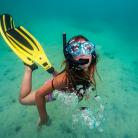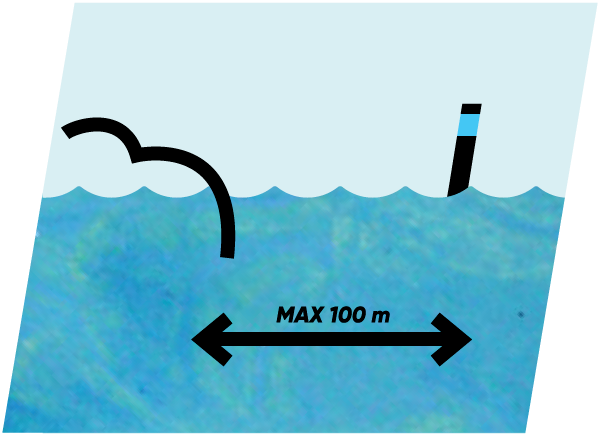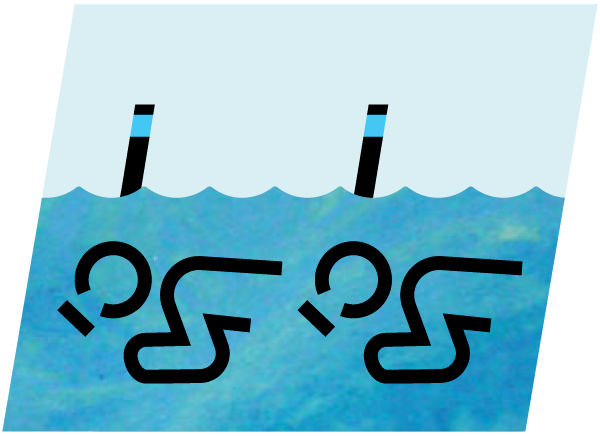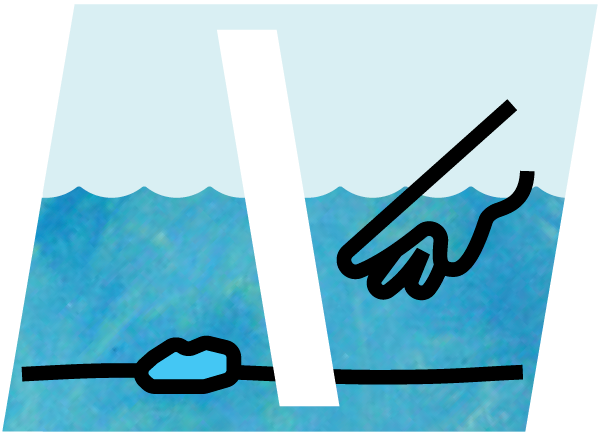Punta Montraker
The Montraker peninsula of Vrsar will delight you with its impressive cliffs that hide the story of a quarry that was created in prehistoric times. Here, within today's sports and recreational zone, there is another magical snorkeling location, located on the very cape of this small peninsula.
Locals call it Punta Montraker (Montraker Cape). The original name comes from the hill that was located on the site of today's quarry. It is stated in the historical archives that its height and volume could be compared to the Vrsar hill on which the old town core is located.
In the recent past, the Montraker quarry had its own operational shore and wharf where the vessels on which the raw stone was loaded and which were known as barkoni, were moored. It is recorded, for example, that in 1846 a railway bridge connecting the town of Mestre with Venice was built by using stone from Montraker. It is interesting that the remains of the loading pier can still be seen in the sea, in front of the pebble beach, at the very entrance to the Montraker sports zone. A large stone block is resolutely waiting for brave jumpers to bring it to life for a moment during the game. The locals call that stone block the Bridge. Its name probably comes from the Italian word ponte d'attracco, meaning a boat mooring site. However, its shortened version ponte means bridge in Italian.
To get to the snorkeling location, continue along the coastal promenade towards the holm oak grove that leads to a small glade with a view of the islet of Galiner, located directly across the cape. On your right, you will notice a stone sculpture that many people use as a resting stop because they can either sit or lie down on it. A small gravel path leads to a concrete sunbathing area with steps to enter the sea.
As soon as you enter the sea, you will notice that the rocky bottom is as soft as a carpet, but be careful because little black urchins are hiding here and there in the holes. Be careful not to step on them because their sting hurts until the spine has been removed. Dive into the bottom from the shallow plateau. The reef on the right side gradually drops to a greater depth. There is a rock with a vertical slit, resembling a sandwich, which hides interesting inhabitants depending on the season.
Feel free to come closer to observe the wonderful colours that adorn this gap and let your eyes adjust to seeing the details. Most of the time, a lobster hides inside the cracks. You will recognize it by its large and strong pincers and red tentacles that it wiggles happily.
Its frequent neighbour is the conger, a snake-like black fish. During the day it hides in a hole, and like the lobster it also likes to have two entrances, for a safe escape. Small and transparent pink cleaner shrimps often keep it company because they are happy to clean it from parasites, without any fear. But don't tease it because its strong teeth can break the molluscs and crab shells.
Curiosities of the sea
The Montraker Cape snorkeling location is also specific for its large number of scallops, fan-shaped shells with a ribbed shell pattern. Small growths and numerous eyes protrude from it. Seen up close it looks like it is laughing, if not startled. If you accidentally scare it, it can swim away in an attempt to escape by quickly opening and closing its shell. It's amazing that you can find this shell and its related species everywhere, even on rocks, because they prefer to hide in the sand. In the Middle Ages, pilgrims used it as a water container, and as a symbol of St. James, they wore it attached to a ribbon around their hats. Here you will also find a large number of yellow and black sponges of various shapes. They are classified as animals and play an important role in the marine ecosystem. They feed by filtering the sea thus affecting the purity and quality of the water.
Seahorses resembling fairy creatures also live on Montraker Cape. They hang onto sponges and algae with their tails. During spawning, the sehorses perform a peculiar wedding dance that can last for days. Males have a small brood pouch on their abdomen where the female lays her eggs. The male takes care of the offspring until the fries swim out.
If you continue to explore this location in the shallows around the cape, you will come across interesting cracks that extend deeper into the rocky shore, teeming with life. Schools of small fish swim in all directions and will be happy to play with curious swimmers. There you can meet schools of dreamfish, mullets, surmullets, damselfish and some sea bass, sea bream, annual sea bream, and an electric ray.
Safety first!
The Montraker Cape snorkeling site is located within a protective barrier marked by a cork line. Keep in mind that it is the limit of safety and pleasant diving as the maritime traffic here is very lively. If you want to continue the research further it is important that you stay within the protective barrier.











